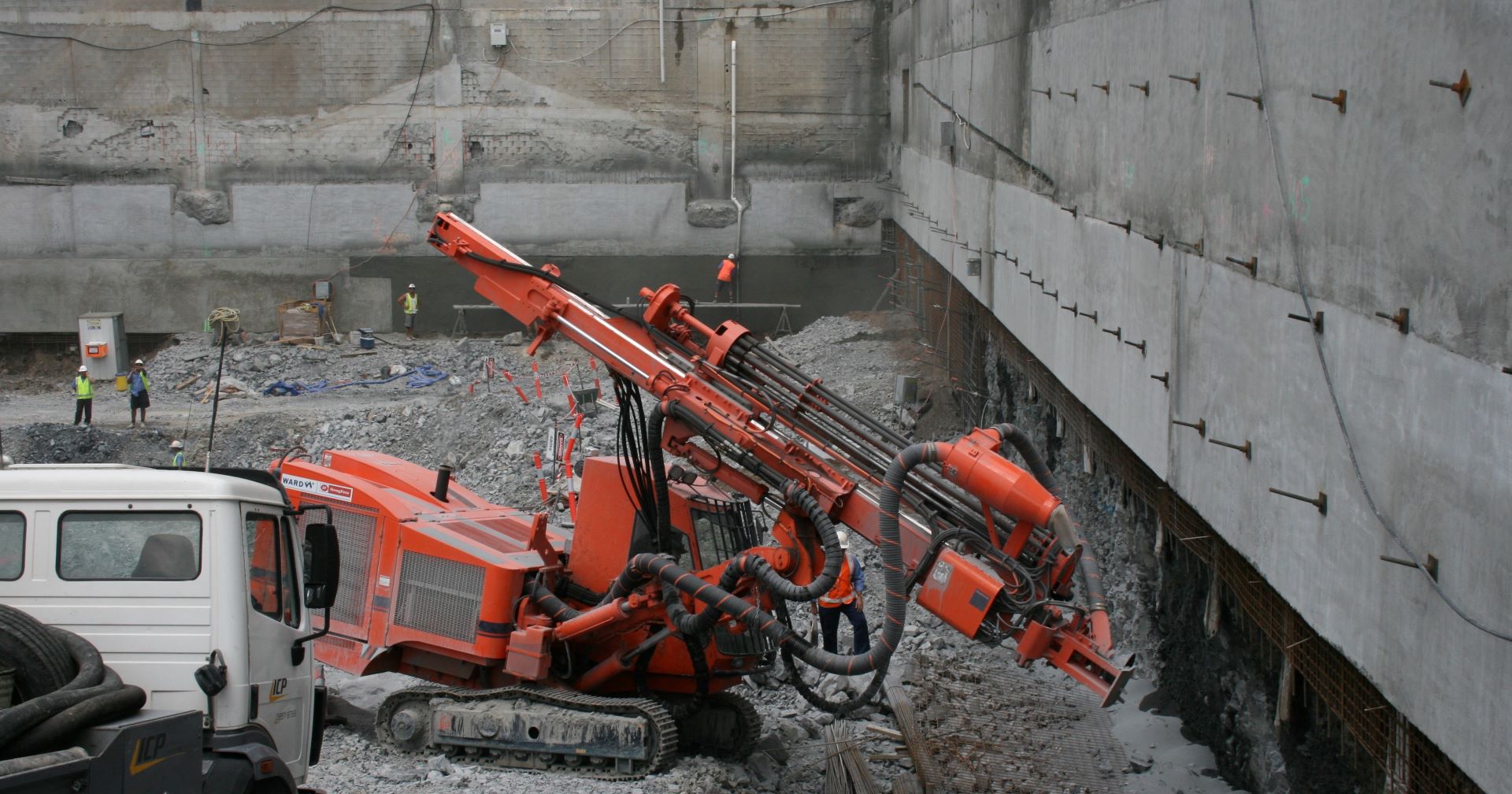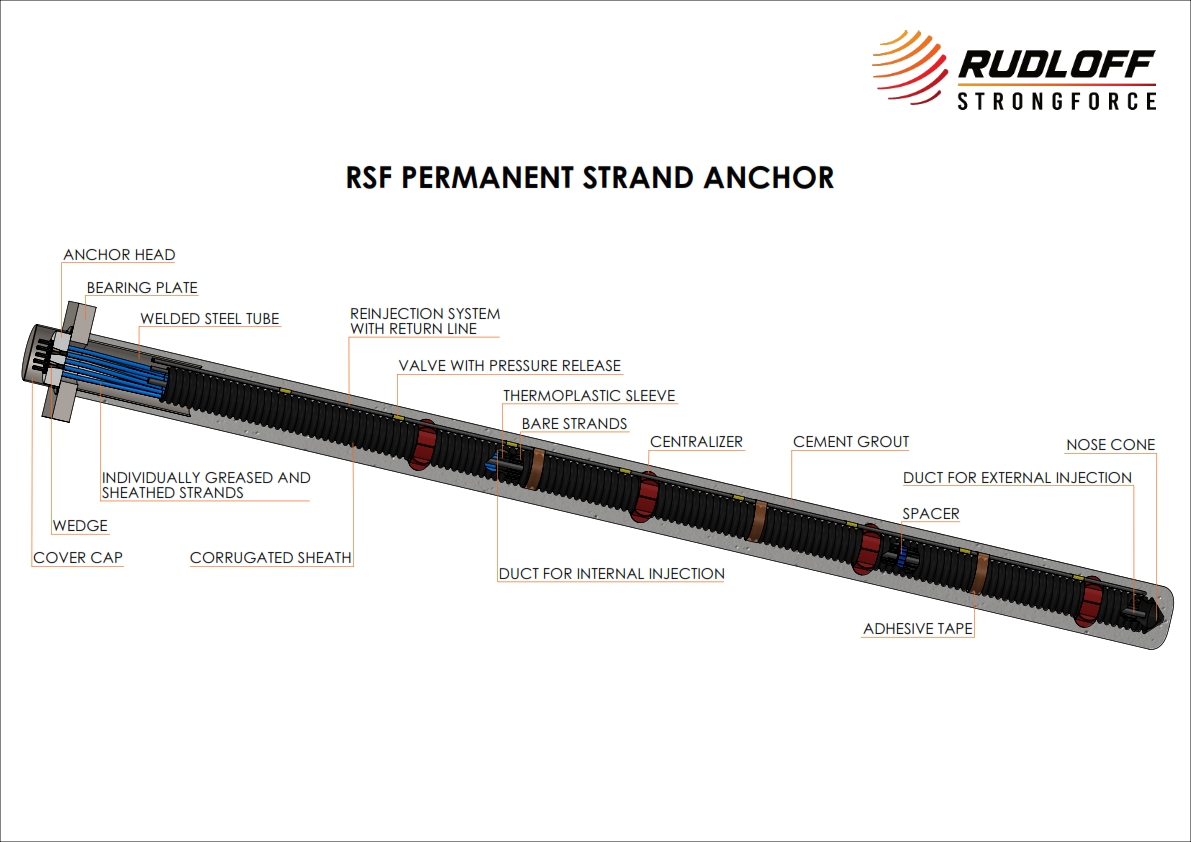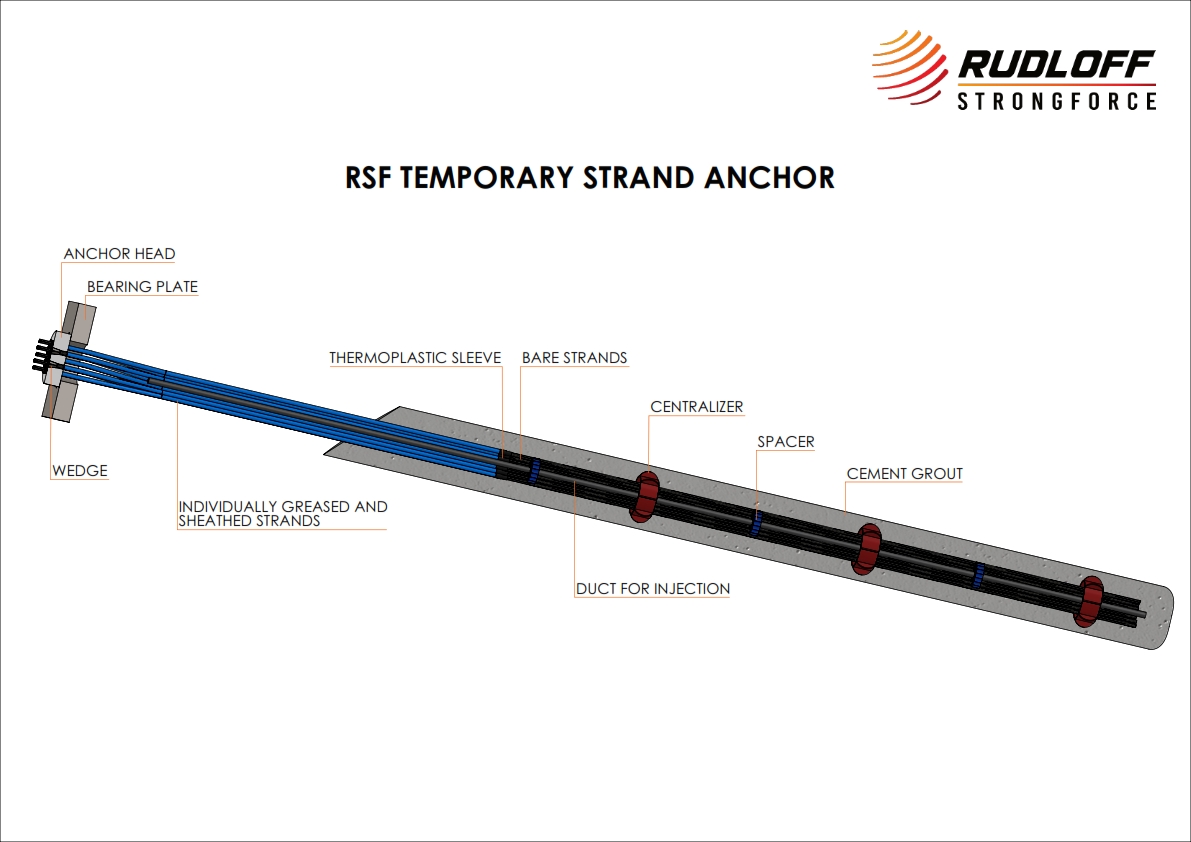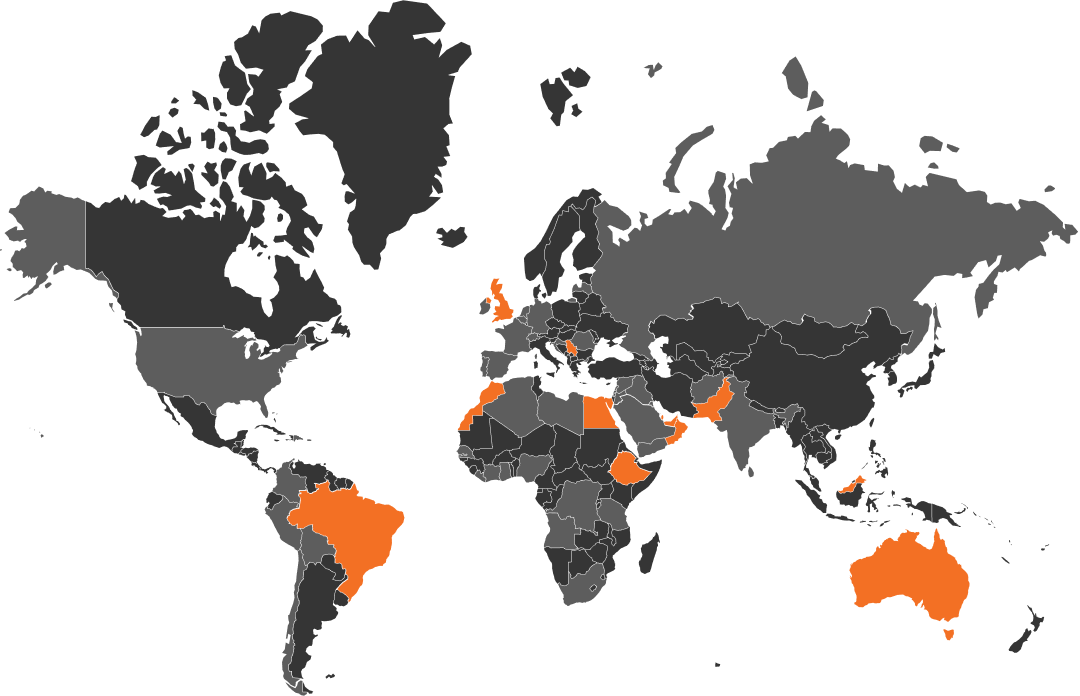Rudloff-StrongForce (RSF) offer a range of strand and bar anchor systems applied in both permanent and temporary applications for infrastructure stabilisation and ground improvement.

Ground anchors have become an important tool for geotechnical and structural design engineers to enhance the stability and load-bearing capacity of the soil and structures. They are considered a safe and reliable application for use in both permanent and temporary applications, being an efficient way of mobilizing dead loads deep in the ground to resist forces that would otherwise require large gravity foundations. Uses include resisting the forces induced by wind, water pressure or tension forces.
RSF Ground Anchor Systems may be used in large dams and retaining walls, holding down underpasses and underground structures, stabilizing wind turbine towers and preventing landslides. RSF’s anchoring systems can be divided into two main categories: strand anchors and bar anchors. The specific attributes of these anchors vary depending on factors such as whether they are tensioned or not, their suitability for rock or soil conditions, and whether they are intended for temporary or permanent use.
RSF Ground Anchors comply with: EN 1537 “Execution of special geotechnical works - Ground anchors” standards.
Soil anchors are pressure grouted tendons installed in either cohesive or non-cohesive soil or loose rock. The anchors transfer forces into the ground through the prestressing steel and grout body. In the free stressing length, the anchor remains free to move.
Rock anchors are post-tensioned tendons installed in drilled holes for which at least the entire bond length is located in rock. The anchor force is transmitted to the rock by bond between the grout body and the rock. Rock anchors can remain unbonded in the free stressing length allowing the anchor to be checked and re-tensioned at any time. In such cases, adequate corrosion protection for the stressing anchorage and the free stressing length must be provided.
On the other hand, the free stressing length can also be fully grouted after the anchor has been stressed, in which case future load adjustment is no longer possible.


Post Tension Anchor – Main Components:
- Anchorage: element that transmits the anchor load to the anchored load-bearing structure.
- Tendon: element that transfers the anchor load from the anchorage to the anchor body.
- Grout body: element that transmits the anchor load to the ground.
- Length of anchor: distance between the head and the end of the anchor in the soil or in the rock.
- Bond length: length over which the load is transmitted to the anchor body.
- Free length: length between the anchor head and the beginning of the bond length, as provided by the result of static and mechanical soil calculations.
Typical uses for Soil Anchors:
- Anchoring of support structures for excavations such as sheet pile walls, soldier piles with lagging, drilled piles, slurry walls, and concrete retaining walls.
- Counteracting uplift forces in structures subjected to buoyancy and lateral loads.
- Stabilization of eccentrically loaded foundations.
- Stabilization of natural or excavated slopes.
Typical uses for Rock Anchors:
- Resist external and uplift forces caused by wind or seismic events.
- Tie back retaining walls.
- Stabilize eccentrically located foundations, slopes, rock walls, and cuts.
- Increase the stability of dams or large bridge foundations.






